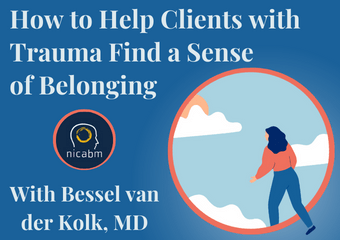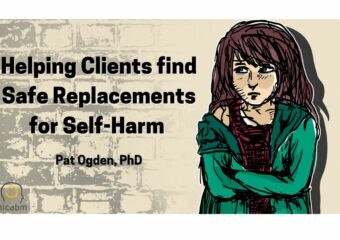Trauma can rip away a client’s sense of safety . . . . . . and leave them with a nervous system that is primed to detect threats. That’s why as practitioners, it’s so important that we have strategies to build a client’s feelings of safety before we help them process traumatic memories. So in […]
Helping Clients Talk About Shame
When Clients are Reluctant to Talk About Shame Working with clients who suffer from deep feelings of shame can be a delicate and nuanced process – for a few reasons . . . To start, shame can disguise itself in a number of ways. It can hide beneath anger, outrage, self-sabotage, or abusive relationships. What’s […]
How to Help Clients with Trauma Find a Sense of Belonging, with Bessel van der Kolk, MD
When a client experiences trauma in childhood, and they aren’t able to develop crucial attachment relationships . . . . . . they may struggle to feel any true sense of belonging right up through adulthood. Instead, they can carry painful messages that they’re unwanted, unneeded, and never truly accepted. So in the video below, […]
Working with Self-Harm: Pat Ogden, PhD with a Safe Replacement for Harmful Actions
In the aftermath of trauma, some clients turn to self-harm to relieve intense feelings of shame, anxiety, or even emotional numbness. Over time, these harmful behaviors can become addictive – and helping clients break that cycle can be a challenging process. So in the video below, Pat Ogden, PhD explains how she helps clients gain […]
Working with the Freeze Response in the Treatment of Trauma with Stephen Porges, PhD
When a client freezes during a session, how do you help them come out of their trauma response (without further triggering them)? This can be challenging because proximity, movement, and eye contact can all feel threatening to a client who is frozen and hyper-aware of danger. So in the video below, Stephen Porges, PhD, shares […]




